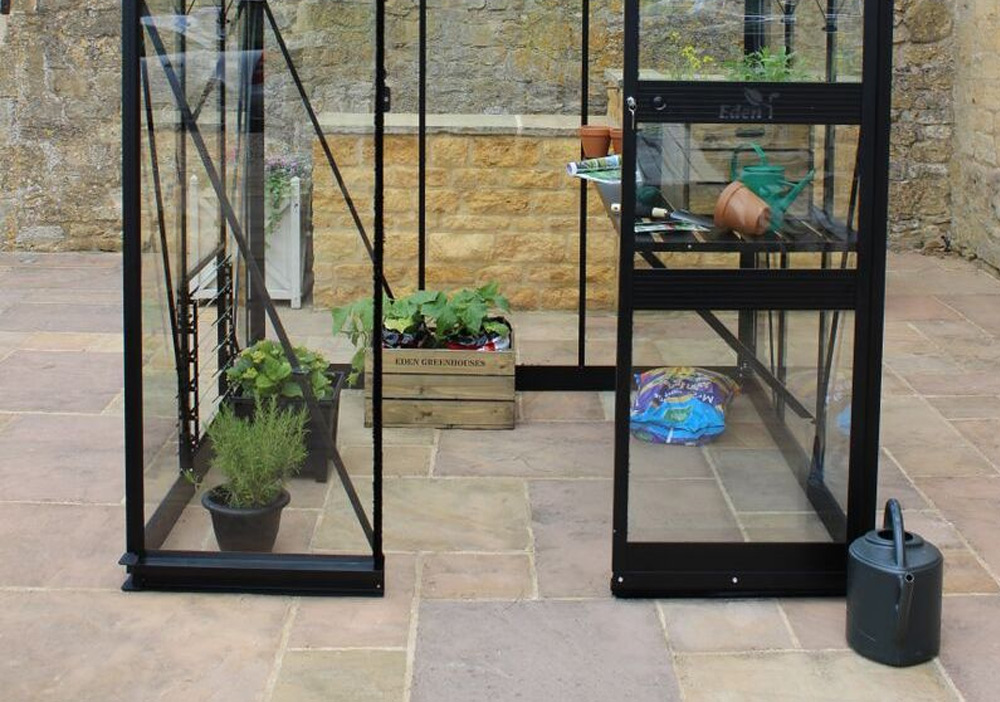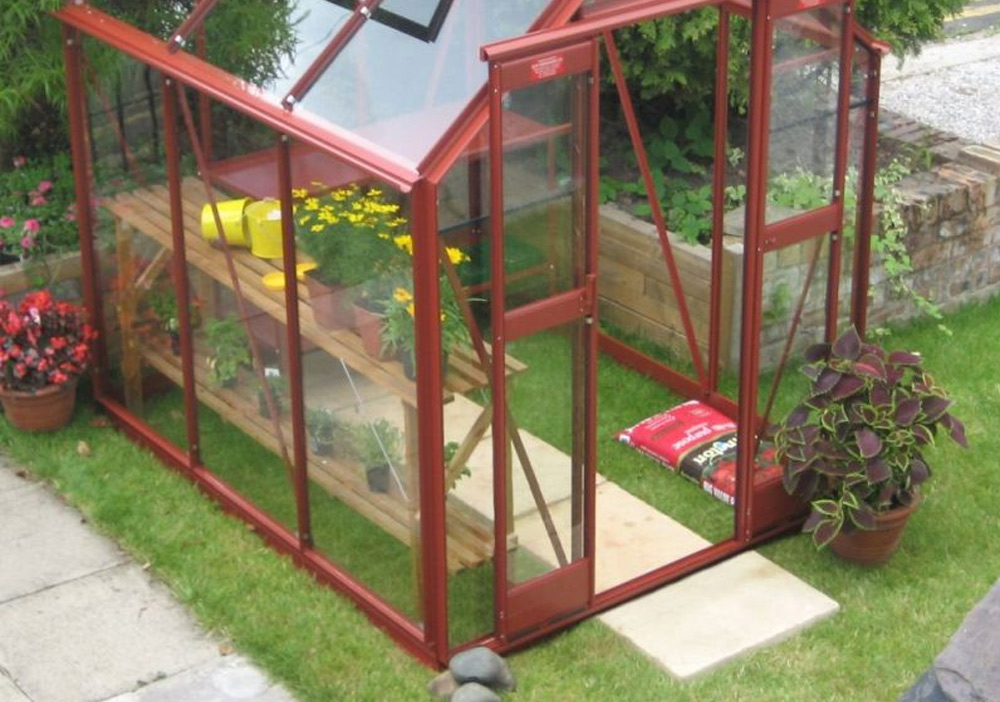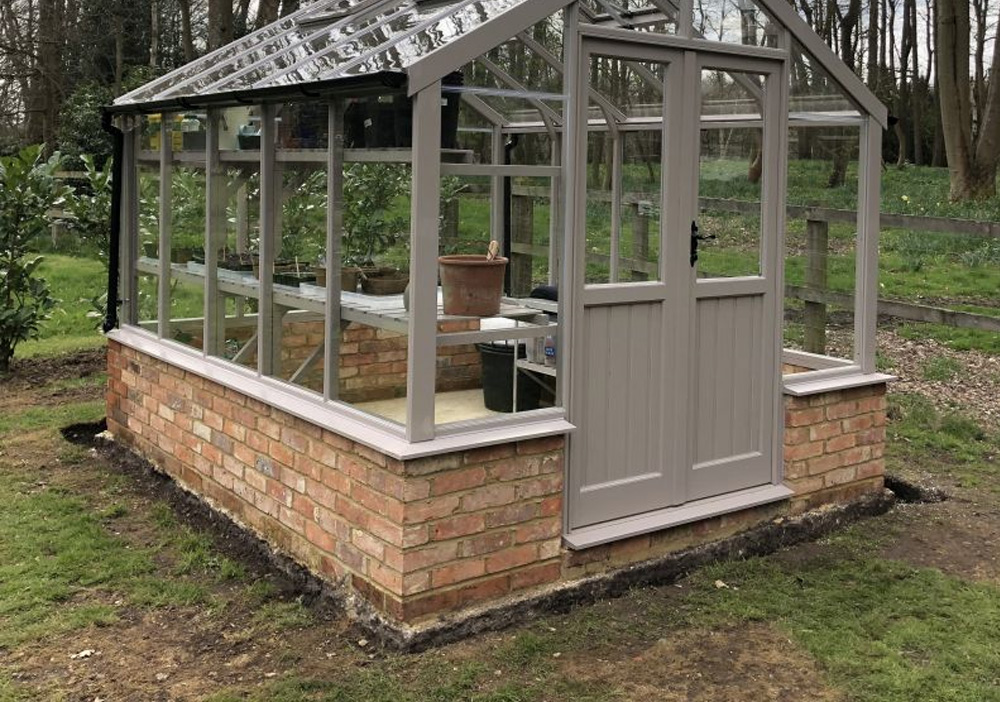How to Prepare Ground for a Greenhouse

Two of the most important, but often overlooked factors to consider when you are building a greenhouse is what type of foundation you will use and how you will ensure that the base is fully secured to the ground.
If your base is able to move, the entire greenhouse could be blown away in a strong wind.
When you purchase a greenhouse you will find that it comes with a metal frame base.
If you take the extra time to secure and level this base, the rest of the job of building the greenhouse will become far easier, and in the end you will have a solid, problem-free greenhouse.
When building your greenhouse, it is necessary to carefully consider the positioning of your greenhouse and assess the soil underneath it. Light and sandy soil will indicate that the use of concrete or slabs is essential.
Cutting corners during this part of building will only result in big problems and significant costs later on. You may even need to replace the entire greenhouse.
There are a few different choices to consider for your greenhouse foundation:
Soil / Open Ground

Take a close look at the soil your greenhouse base will be sitting on. If the soil is sandy, you have no choice but to use concrete slabs. If the soil is firm and well compacted, you may choose to only use concrete in the four posts of your greenhouse frame. This is clearly the most inexpensive option. However, if your greenhouse is larger than 8ft x 10ft this easy method will not work. A heavier greenhouse will gradually push the base into the ground, causing the frame to warp, and the glass to break.
Ensure that the area you are building the greenhouse on is completely level by building it up with more soil in the places it needs to be built up. Once the soil is level it is necessary to use a tamper, roller or vibrating plate to flatten, even and compact the soil. The required machinery can be rented from any tool shop.
There are pros and cons to building your greenhouse on a soil base. The most obvious benefit is that you can plant directly into the soil inside the greenhouse, and not have to worry about drainage, and you can choose if you want to plant in pots and growbags or not. The downsides of sitting your greenhouse directly on the soil with only the leg posts in concrete are significant. You run the risk of having an extremely muddy floor, pests may get in, and more importantly, if your greenhouse starts to sink the frame will warp and the glass will break.
Perimeter Base
If your greenhouse is large, or you are worried about the greenhouse subsiding, it is fairly inexpensive to build a perimeter out of concrete or paving blocks. Use spray paint to mark out the exact dimensions of the greenhouse before laying your solid perimeter. There is no need to dig out the area if you lay your slabs into a cement mixture to ensure they are fixed firmly to the ground. Use strong rawlplugs or screws to attach the greenhouse base to your perimeter.
There are several benefits to taking the time to build this type of a base for your greenhouse. You are only building the perimeter with concrete slabs which leaves the middle area as a nice soil base, perfect for planting directly into. It is cheaper than doing the entire base in concrete blocks or paving slabs.
The downside of this type of set-up is that it may be quite difficult and time consuming to construct, as the ground must be completely level and the measurements must be precise.
Paving/Slabs
For an aesthetically pleasing and durable base you can make your entire base from paving slabs or blocks. This type of base is one of the easiest to maintain, and perfect if you like to plant in growbags or pots. Like all of the other options, there are advantages and disadvantages to this kind of a base. A concrete slab base will look great and be easy to keep clean and tidy looking. The cracks in between your slabs provide water drainage and your greenhouse will be safe from warping or sinking.
The main disadvantage of this type of a foundation is the expense. It also limits you to using only containers for your planting.
Solid Concrete

The final choice for your greenhouse base is to lay a concrete pad. This is by far the most heavy-duty and durable foundation. If your greenhouse is large this is probably your best choice. You only really need a broom to keep it neat and tidy. It can easily be disinfected using water and detergent, thus keeping unwanted diseases out. You will not have any problems with rodents or pests as they will not be able to tunnel under the concrete. This type of base also allows you to use the strongest of bolts to hold your greenhouse steadily in position.
The disadvantages of a concrete pad include drainage issues, as there will not be any place other than the edges of the greenhouse for the water to drain. This may cause standing water in your greenhouse. It is fairly easy to drill a few drainage holes to alleviate this issue. This option also may be a bit more expensive than the others.
Now that you have chosen what type of base will work the best for you it is time to build your greenhouse and grow those wonderful plants!
If you want a new greenhouse, the range here at South West Greenhouses can't be beaten!
 Author:
Author: